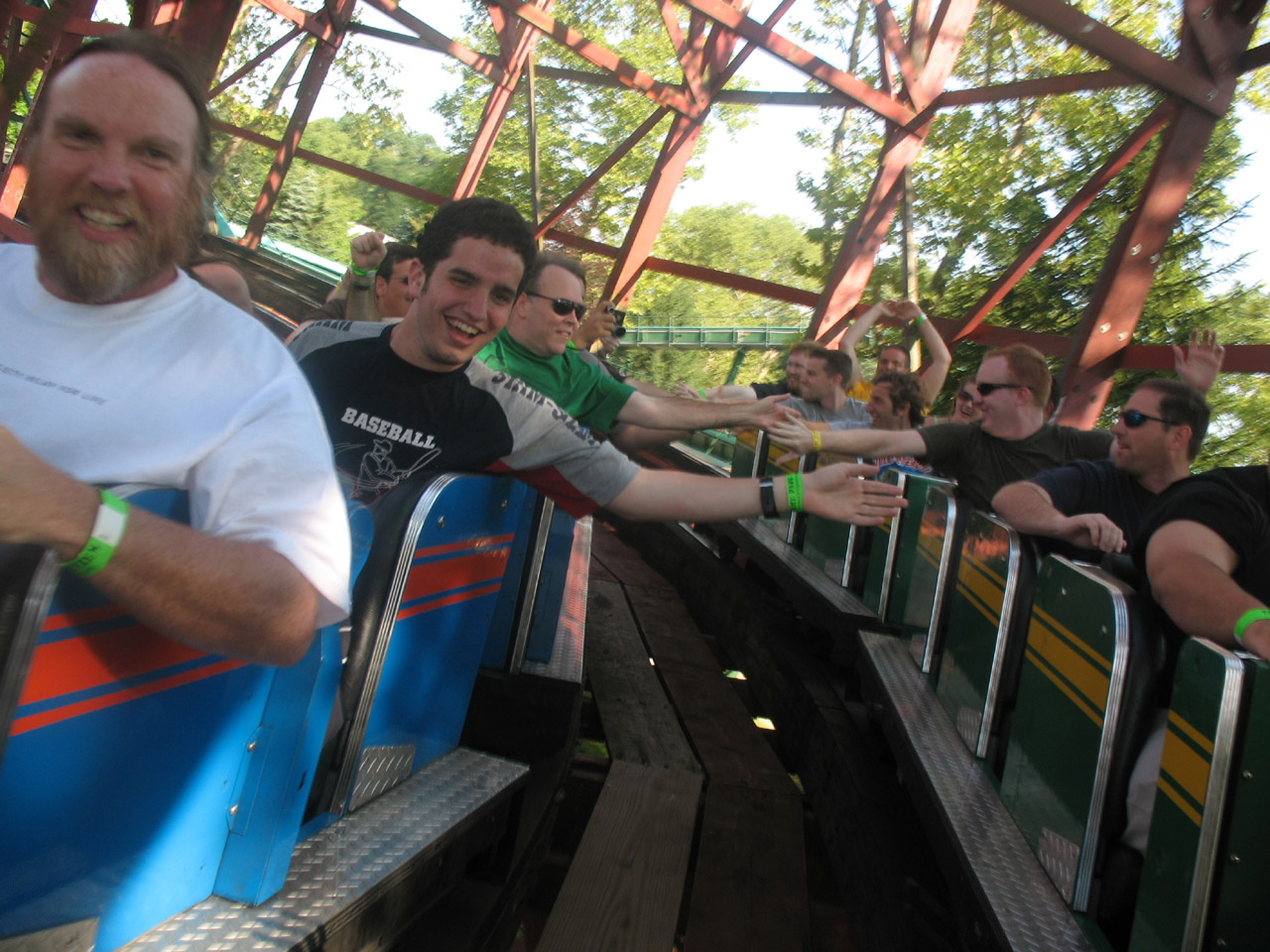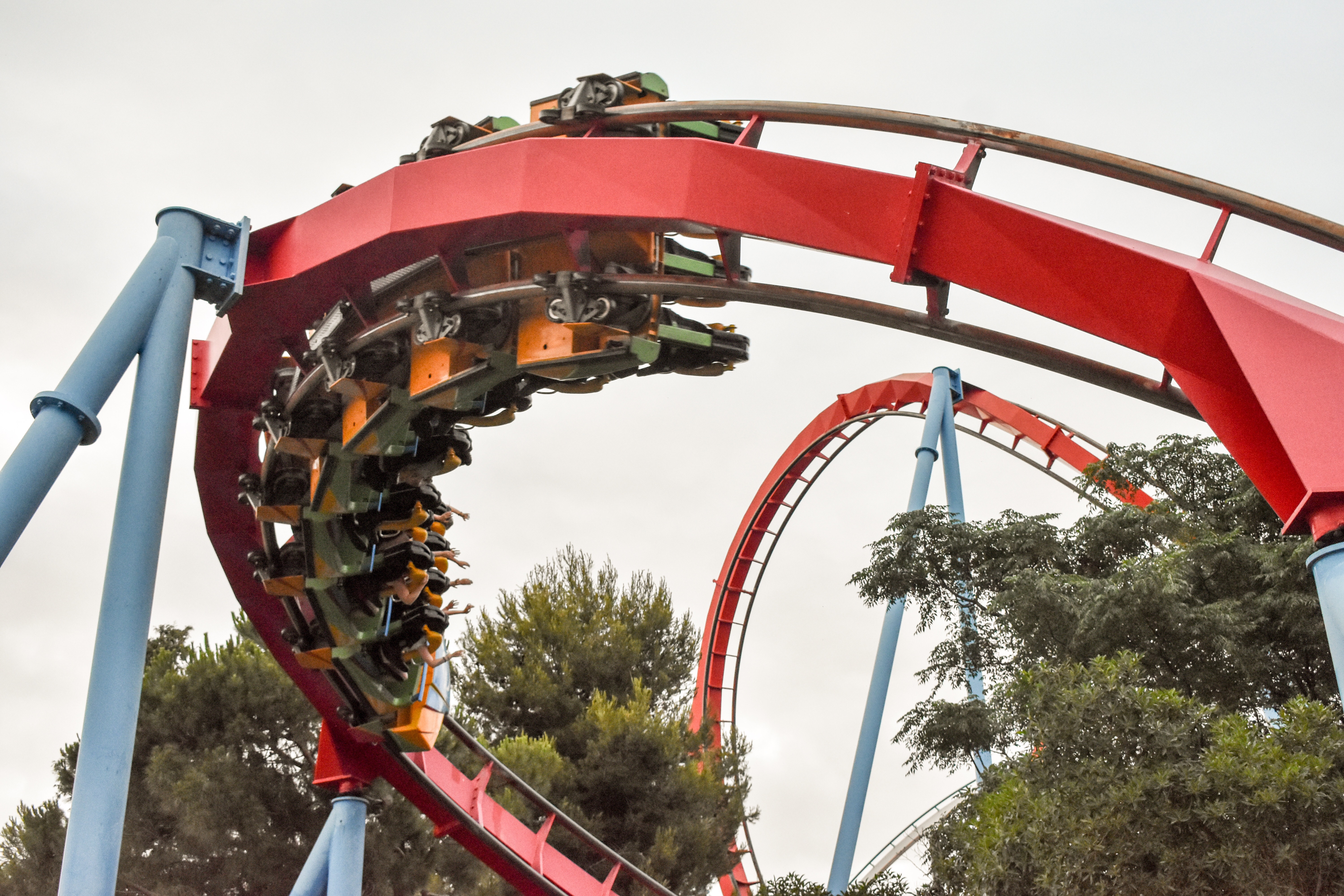|
Twisted Colossus
Twisted Colossus is a steel roller coaster located at Six Flags Magic Mountain in Valencia, California. Originally designed and built by International Amusement Devices, the roller coaster opened as Colossus, a dual-tracked roller coaster, on June 29, 1978. It was the tallest and fastest wooden roller coaster in the world and the first with two drops greater than . Colossus became well known after appearances in film and television, including the box-office hit ''National Lampoon's Vacation'' and the made-for-TV movie '' Kiss Meets the Phantom of the Park''. For 19 years, it was the park's main attraction until the opening of Superman: The Escape. After more than 36 years in operation, Six Flags closed Colossus on August 16, 2014. Rocky Mountain Construction renovated the ride converting its wooden track to steel, allowing for the addition of inversions and steep drops. It retained much of its wooden structure, however, and reemerged as Twisted Colossus on May 23, 2015. History ... [...More Info...] [...Related Items...] OR: [Wikipedia] [Google] [Baidu] |
Alan Schilke
Alan Schilke is an engineer and roller coaster designer based in Hayden, Idaho, United States. He first made his mark on the industry by designing the 4th Dimension roller coaster, X2, while working with Arrow Dynamics. Schilke now works as a design engineer at Ride Centerline LLC and occasionally works with Rocky Mountain Construction (RMC). Career Schilke worked with Arrow Dynamics for many years working his way up to the role of head engineer. During his time at Arrow Dynamics, Schilke was credited as the designer of '' Road Runner Express'' at Six Flags Fiesta Texas and '' Tennessee Tornado'' at Dollywood. Around the same time, Schilke came up with the concept of the 4th Dimension roller coaster. This concept was criticised by his colleagues at Arrow Dynamics for being too extreme and impossible to engineer. The project only got off the ground when Six Flags' President Gary Story asked the company to develop a scaled-down prototype. This then led to the design of '' X'' wh ... [...More Info...] [...Related Items...] OR: [Wikipedia] [Google] [Baidu] |
Structural Engineering
Structural engineering is a sub-discipline of civil engineering in which structural engineers are trained to design the 'bones and muscles' that create the form and shape of man-made structures. Structural engineers also must understand and calculate the stability, strength, rigidity and earthquake-susceptibility of built structures for buildings and nonbuilding structures. The structural designs are integrated with those of other designers such as architects and building services engineer and often supervise the construction of projects by contractors on site. They can also be involved in the design of machinery, medical equipment, and vehicles where structural integrity affects functioning and safety. See glossary of structural engineering. Structural engineering theory is based upon applied physical laws and empirical knowledge of the structural performance of different materials and geometries. Structural engineering design uses a number of relatively simple structural c ... [...More Info...] [...Related Items...] OR: [Wikipedia] [Google] [Baidu] |
Racer (Kennywood)
The Racer is a wooden racing roller coaster located at Kennywood amusement park near Pittsburgh in West Mifflin, Pennsylvania. Built by Charlie Mach and designed by the legendary John A. Miller, the Racer opened to the public in 1927 and is one of the oldest operating roller coasters in the world. It features a Möbius loop layout, in which both of its trains travel along one continuous track. Each train returns to the opposite side of the station from which it began. Beginnings The first Kennywood Racer was first built in 1910 as a side friction roller coaster by Frederick Ingersoll. It was a twin-track racing coaster designed by John Miller that cost nearly $50,000. When it was built, it was the largest racing coaster in the world. The original Racer had two trains racing side by side on two separate tracks, but it didn't have wheels under the track, so dips and curves were gentle. The trains consisted of three-seat cars with a seating capacity of 18. The Racer was torn down i ... [...More Info...] [...Related Items...] OR: [Wikipedia] [Google] [Baidu] |
Air-time
In the context of amusement rides, air time, or airtime, refers to the time during which riders of a roller coaster or other ride experience either frictionless or negative G-forces. The negative g-forces that a rider experiences is what creates the sensation the rider feels of floating out of their seat. With roller coasters, air time is usually achieved when the train travels over a hill at speed. There are different sensations a rider will feel depending on the ride being an ejector or floater airtime ride. In 2001 the Guinness World Records recorded Superman: Escape from Krypton, located at Six Flags Magic Mountain, Valencia, California, one of the fastest roller coaster in the world, where riders experienced a then record 6.5 seconds of 'airtime' or negative G-force.Guinness World Records 2001- Page 86 "Superman The Escape, located at Six Flags Magic Mountain, Valencia, California, USA, is the fastest roller coaster in the world. They experience a record 6.5 seconds of ' ... [...More Info...] [...Related Items...] OR: [Wikipedia] [Google] [Baidu] |
Racing Roller Coaster
A dual-tracked roller coaster is a roller coaster that consists of two tracks. They can be configured as racing, dueling, or Möbius loop roller coasters. Some dual-track coasters operate only one track side at a time, including Rolling Thunder and Colossus. Others may opt to run one side facing frontward and one side facing backward. Variants : consists of two separate roller coasters that travel along parallel or mirrored tracks to simulate a race between the trains. The coaster trains travel along tracks just a few feet apart from one another. They often get close enough for riders to reach out and slap hands with riders on the opposite train, though this is extremely dangerous. These coasters are usually old wooden coasters. : features two (or more) roller coasters, usually with a similar layout, built close to each other. The rides are designed to do just as the name indicates: to duel. The coaster's layout often consists of strategic maneuvering to produce near-h ... [...More Info...] [...Related Items...] OR: [Wikipedia] [Google] [Baidu] |
Psyclone (roller Coaster)
Psyclone was a wooden roller coaster located at Six Flags Magic Mountain in Santa Clarita, California. Designed by Curtis D. Summers and constructed by the Dinn Corporation, the roller coaster opened to the public on March 23, 1991. Psyclone's design was modeled after the well-known Coney Island Cyclone roller coaster, a historical landmark located at Coney Island in New York City. It featured eleven hills, five high-speed banked turns, and a dark tunnel. Bolliger & Mabillard, a company that builds steel roller coasters, manufactured the trains for Psyclone. History Following the debut of Georgia Cyclone at Six Flags Over Georgia in 1990, Six Flags again hired Curtis D. Summers and Charles Dinn of Dinn Corporation to design and construct a similar wooden roller coaster at Six Flags Magic Mountain. Georgia Cyclone had caused multiple injuries in the short time since its opening and had to undergo several modifications to tone down the ride's profile. For Magic Mountain, Six Flags ... [...More Info...] [...Related Items...] OR: [Wikipedia] [Google] [Baidu] |
Morgan Manufacturing
D. H. Morgan Manufacturing, later simply known as Morgan, was a manufacturer of roller coaster trains, custom amusement rides, roller coasters, children's rides and other amusement devices. Founded in 1983, the company was originally headquartered in Scotts Valley, California. In 1991, the company moved to La Selva Beach, California, and into a new 55,000-square-foot indoor manufacturing facility. That facility was later increased to 75,000 square feet.D. H. Morgan Manufacturing Inc. Fact Sheet (undated) The company produced a variety of rides from 1983 until 2001, but is probably best known for its steel hyper coasters. History Dana Morgan, the son of Arrow Development co-founder Ed Morgan, founded D. H. Morgan Manufacturing in 1983. He got his start in the amusement industry at age 14 as a ride operator at Playtown, a small children's park in Palo Alto, California, that was owned by Arrow Development. Upon graduation from Cal Poly San Luis Obispo he went to work for Disney, prim ... [...More Info...] [...Related Items...] OR: [Wikipedia] [Google] [Baidu] |
Philadelphia Toboggan Company
Philadelphia Toboggan Coasters (PTC) is one of the oldest existing roller coaster manufacturing companies in the world. Based in Hatfield, Pennsylvania, it was established in 1904 by Henry Auchey and Chester Albright under the name Philadelphia Toboggan Company. The company manufactured carousels, wooden roller coasters, toboggans (roller coaster cars) and later, roller coaster trains. History The Philadelphia Toboggan Company was incorporated January 20, 1904. It built and designed roller coasters until 1979. Notable designers included Joe McKee, John A. Miller, Herbert Schmeck, Frank Hoover, and John C. Allen. When Allen retired as president in 1976, the company stopped designing roller coasters but continued to work on coaster projects until 1979 when it exited the coaster-construction industry permanently. The company manufactured carousels known for their elaborate carvings and decorations. It expanded with the acquisition of the inventory of the Dentzel Carousel Compan ... [...More Info...] [...Related Items...] OR: [Wikipedia] [Google] [Baidu] |
Speed Hill
This list of roller coaster elements contains the individual parts of roller coaster design and operation. Introduction Roller coaster elements are the individual parts of roller coaster design and operation, such as a track, hill, loop, or turn. Variations in normal track movement that add thrill or excitement to the ride are often called "thrill elements". Common elements Banked turn A banked turn is when the track twists from the horizontal plane into the vertical plane, tipping the train to the side in the direction of the turn. Banking is used to minimize the lateral G-forces on the riders to make the turn more comfortable. When a banked turn continues to create an upward or downward spiral of approximately 360 degrees or more, it becomes a helix. Brake run A brake run on a roller coaster is any section of track meant to slow or stop a roller coaster train. Brake runs may be located anywhere or hidden along the circuit of a coaster and may be designed to bring the train to ... [...More Info...] [...Related Items...] OR: [Wikipedia] [Google] [Baidu] |
Tornado
A tornado is a violently rotating column of air that is in contact with both the surface of the Earth and a cumulonimbus cloud or, in rare cases, the base of a cumulus cloud. It is often referred to as a twister, whirlwind or cyclone, although the word cyclone is used in meteorology to name a weather system with a low-pressure area in the center around which, from an observer looking down toward the surface of the Earth, winds blow counterclockwise in the Northern Hemisphere and clockwise in the Southern. Tornadoes come in many shapes and sizes, and they are often visible in the form of a condensation funnel originating from the base of a cumulonimbus cloud, with a cloud of rotating debris and dust beneath it. Most tornadoes have wind speeds less than , are about across, and travel several kilometers (a few miles) before dissipating. The most extreme tornadoes can attain wind speeds of more than , are more than in diameter, and stay on the ground for more than 100 k ... [...More Info...] [...Related Items...] OR: [Wikipedia] [Google] [Baidu] |





